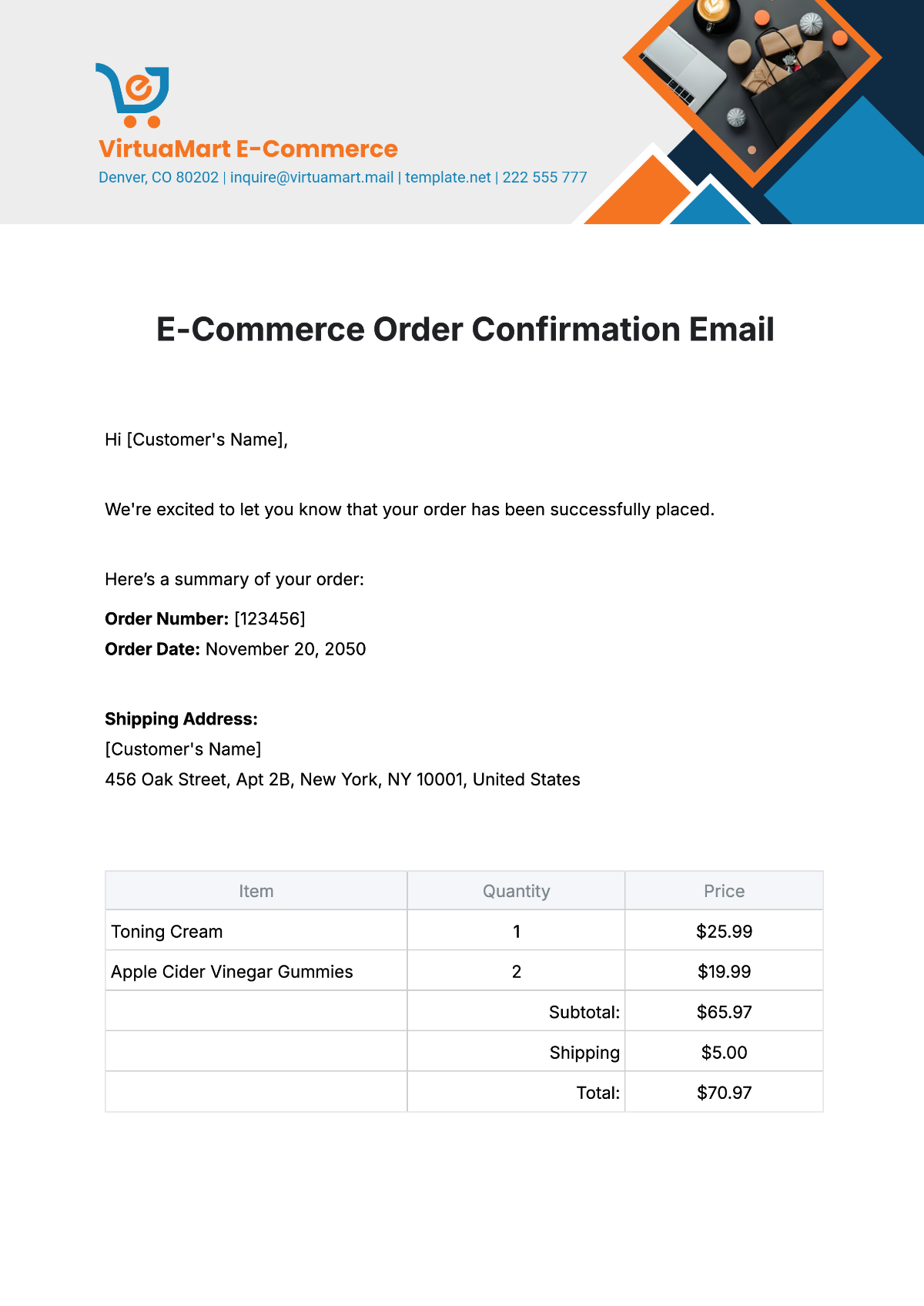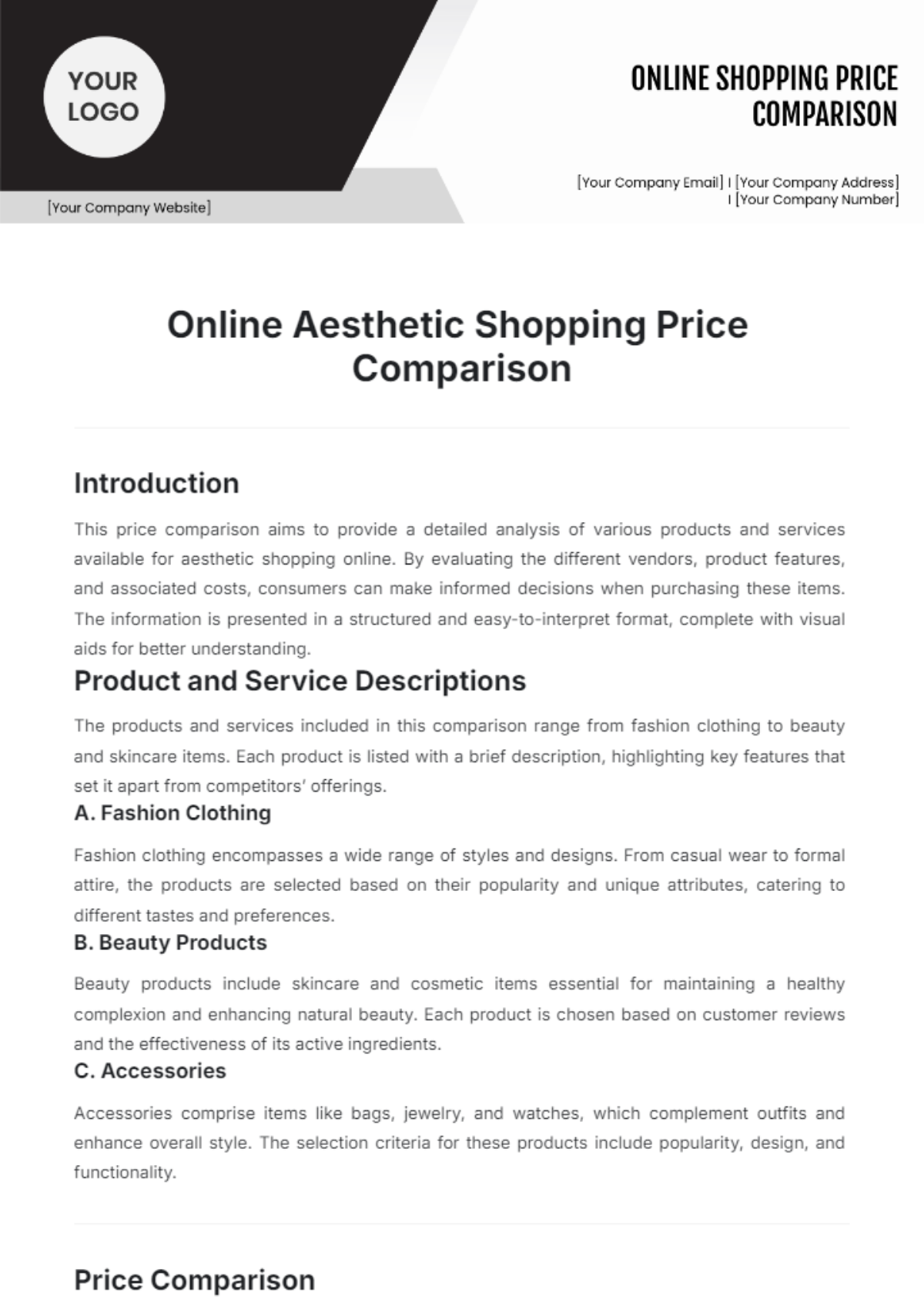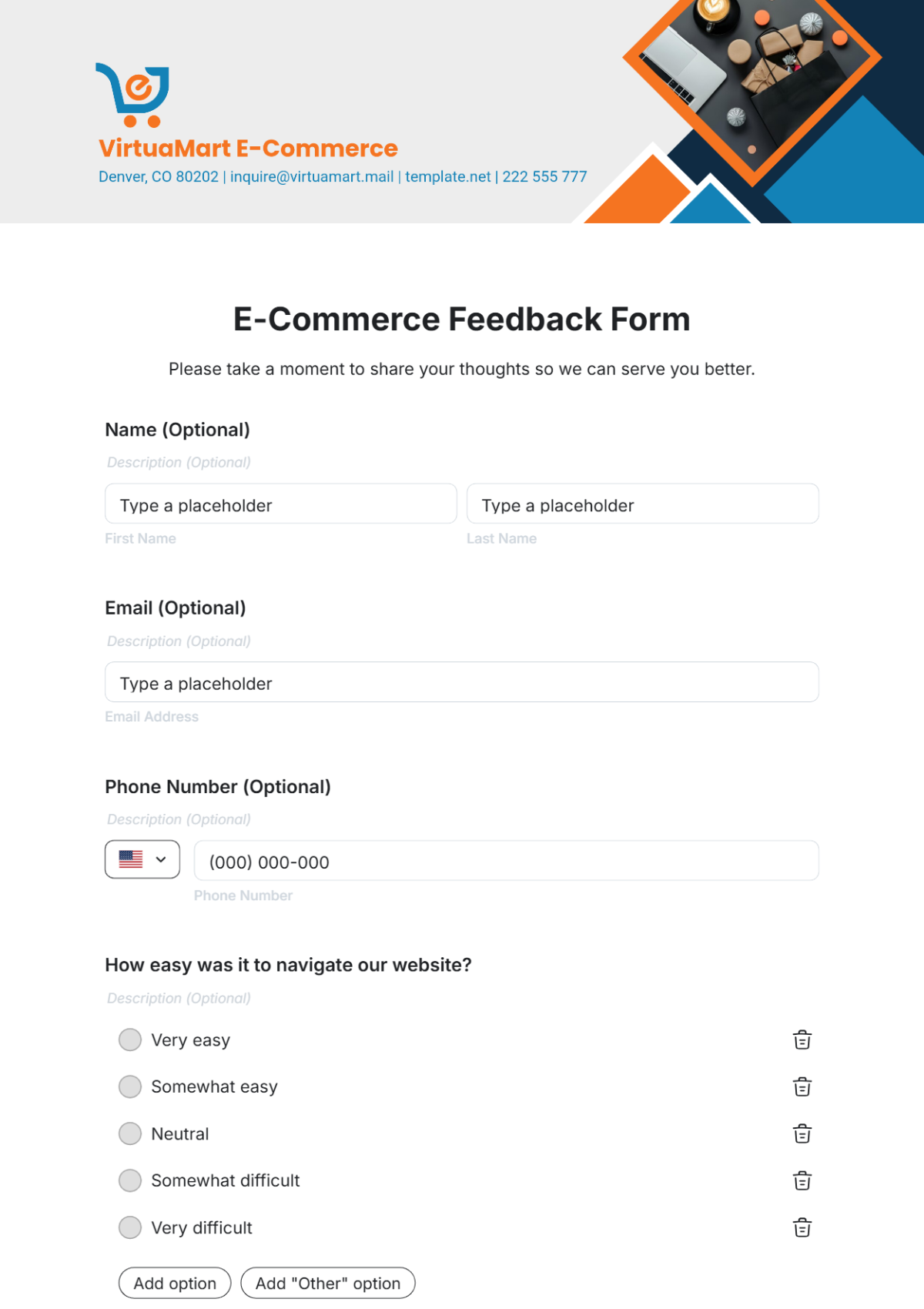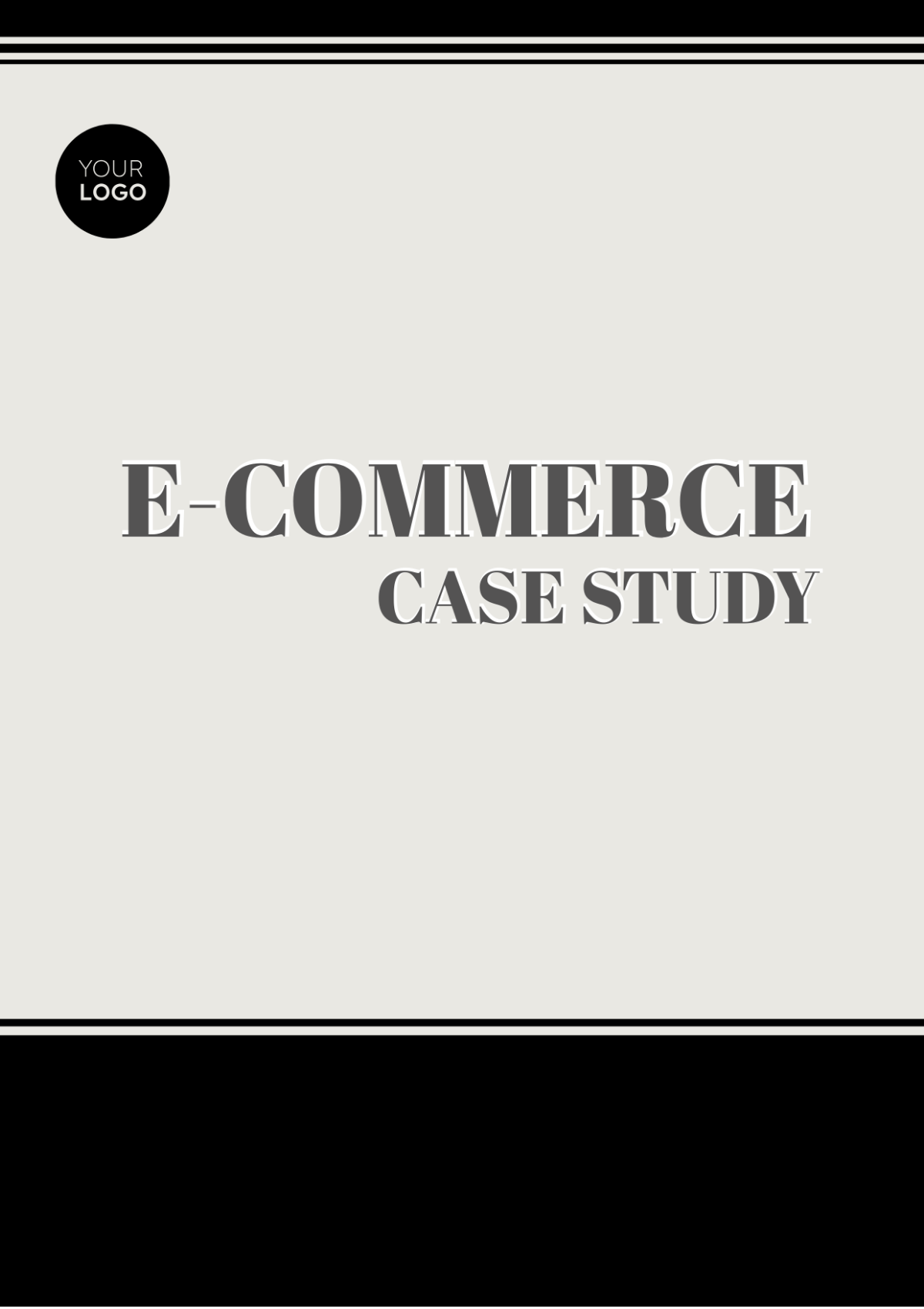E-Commerce Business Requirements Document
I. Introduction
The E-Commerce Business Requirements Document (BRD) serves as a critical foundation for the successful development, upgrade, and integration of your e-commerce platform. This document outlines the key business objectives, technical requirements, and expected outcomes for the e-commerce project, ensuring all stakeholders are aligned throughout the project lifecycle. By providing clear guidance and expectations, the BRD minimizes risks and helps deliver a platform that meets both business and user needs.
Prepared by: [YOUR NAME]
Email: [YOUR EMAIL]
Date: November 6, 2050
II. Business Objectives
The primary goal of this e-commerce platform is to establish a seamless online shopping experience that enhances customer satisfaction, increases sales, and expands brand visibility. Specific business objectives include:
Increase Conversion Rate: Improve the user experience to convert more visitors into paying customers.
Expand Product Offerings: Integrate a broader range of products to appeal to a wider audience.
Enhance Customer Loyalty: Implement features like personalized recommendations and loyalty programs.
Boost Sales Volume: Through optimized checkout processes and promotional tools.
The business team and other stakeholders will use this document to ensure that these objectives are clearly understood and measurable, setting the stage for development and testing.
III. Functional Requirements
The platform must support a variety of functions to ensure a smooth customer journey. These include:
Feature | Description | Priority | Deadline |
|---|---|---|---|
Product Search | Must allow users to search products by category, keyword, or filter. | High | December 15, 2050 |
Shopping Cart | Users must be able to add, edit, and remove items easily. | High | December 15, 2050 |
Payment Gateway Integration | Must support multiple payment options (e.g., credit card, PayPal). | High | December 20, 2050 |
User Registration/Login | Secure login and registration system with options for social logins. | Medium | December 25, 2050 |
Order Management System | Track orders, returns, and shipping statuses. | High | December 30, 2050 |
Each of these functions is essential to ensure that the platform meets the business objectives and provides users with a seamless shopping experience.
IV. Non-Functional Requirements
Non-functional requirements focus on the platform’s performance, security, scalability, and usability. These include:
Scalability: The system should handle at least 10,000 simultaneous users without performance degradation.
Security: Must comply with PCI-DSS and GDPR regulations to ensure customer data is secure.
Performance: Pages should load in under 3 seconds to optimize user experience.
Accessibility: Platform must be accessible to users with disabilities (WCAG 2.1 level AA compliance).
Backup and Disaster Recovery: Data backups every 24 hours with a recovery time objective (RTO) of 2 hours.
These requirements ensure that the platform remains stable, secure, and efficient as it grows.
V. Use Case: Platform Development
In the development of a new e-commerce platform, the BRD outlines all necessary features and user stories. The goal is to create a platform that supports a smooth customer experience from browsing products to completing a transaction.
For example:
User Story: As a customer, I want to be able to browse products by category, so I can quickly find what I am looking for.
Acceptance Criteria: Categories must be clearly defined, and users must be able to filter by product attributes such as price, color, and size.
The development team will use this BRD to define detailed technical specifications and priorities.
VI. Use Case: Feature Implementation
When implementing new features, such as customer reviews or AI-based product recommendations, the BRD is used to establish clear requirements. For instance:
Customer Review Feature: Allows users to leave product reviews and rate items on a scale of 1 to 5.
Product Recommendation Engine: Uses past user behavior to suggest products they might be interested in.
These features must be integrated smoothly into the existing platform to maintain a consistent user experience while meeting business objectives.
VII. Vendor Selection and Integration
If third-party vendors or tools are involved (e.g., for payment processing, shipping, or analytics), the BRD specifies integration requirements such as:
Vendor | Integration Details | Compliance Requirements |
|---|---|---|
Payment Gateway | Integration via API with secure transaction handling | PCI-DSS Compliance |
Shipping Provider | API integration for real-time shipping quotes | Carrier-specific requirements |
Analytics Tool | Integration with e-commerce data for insights | GDPR Compliance |
These vendor requirements ensure compatibility between different systems and streamline the overall development process.
VIII. Conclusion
The E-Commerce Business Requirements Document is a living document that guides the development, implementation, and ongoing optimization of your e-commerce platform. By setting clear business goals, defining technical requirements, and identifying key use cases, this BRD serves as the blueprint for delivering a platform that meets both business objectives and customer expectations. With alignment from all stakeholders, the project is positioned for success, driving growth, user satisfaction, and long-term business value.
For more information or inquiries, please contact [YOUR NAME] at [YOUR EMAIL].
















































